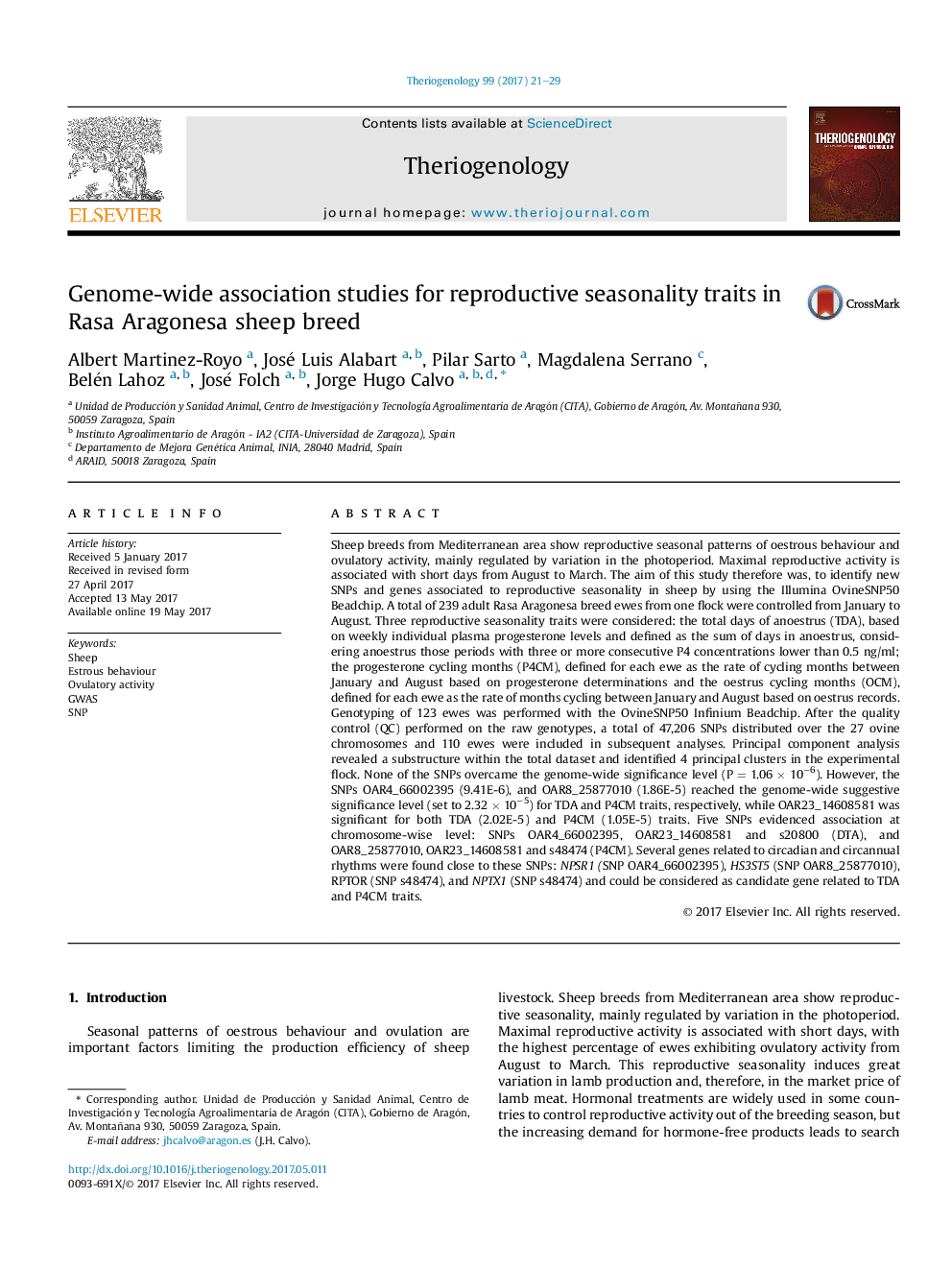| کد مقاله | کد نشریه | سال انتشار | مقاله انگلیسی | نسخه تمام متن |
|---|---|---|---|---|
| 5523041 | 1546070 | 2017 | 9 صفحه PDF | دانلود رایگان |
- GWAS for three reproductive seasonality phenotypes has been performed.
- Three SNPs reached the genome-wide suggestive significance level.
- Five SNPs were significant at the chromosome-wise level.
- Three of these SNPs were found close/within genes related to circadian and circannual rhythms.
- None of these genes were previously reported associated for reproductive seasonality.
Sheep breeds from Mediterranean area show reproductive seasonal patterns of oestrous behaviour and ovulatory activity, mainly regulated by variation in the photoperiod. Maximal reproductive activity is associated with short days from August to March. The aim of this study therefore was, to identify new SNPs and genes associated to reproductive seasonality in sheep by using the Illumina OvineSNP50 Beadchip. A total of 239 adult Rasa Aragonesa breed ewes from one flock were controlled from January to August. Three reproductive seasonality traits were considered: the total days of anoestrus (TDA), based on weekly individual plasma progesterone levels and defined as the sum of days in anoestrus, considering anoestrus those periods with three or more consecutive P4 concentrations lower than 0.5Â ng/ml; the progesterone cycling months (P4CM), defined for each ewe as the rate of cycling months between January and August based on progesterone determinations and the oestrus cycling months (OCM), defined for each ewe as the rate of months cycling between January and August based on oestrus records. Genotyping of 123 ewes was performed with the OvineSNP50 Infinium Beadchip. After the quality control (QC) performed on the raw genotypes, a total of 47,206 SNPs distributed over the 27 ovine chromosomes and 110 ewes were included in subsequent analyses. Principal component analysis revealed a substructure within the total dataset and identified 4 principal clusters in the experimental flock. None of the SNPs overcame the genome-wide significance level (PÂ =Â 1.06Â ÃÂ 10â6). However, the SNPs OAR4_66002395 (9.41E-6), and OAR8_25877010 (1.86E-5) reached the genome-wide suggestive significance level (set to 2.32Â ÃÂ 10â5) for TDA and P4CM traits, respectively, while OAR23_14608581 was significant for both TDA (2.02E-5) and P4CM (1.05E-5) traits. Five SNPs evidenced association at chromosome-wise level: SNPs OAR4_66002395, OAR23_14608581 and s20800 (DTA), and OAR8_25877010, OAR23_14608581 and s48474 (P4CM). Several genes related to circadian and circannual rhythms were found close to these SNPs: NPSR1 (SNP OAR4_66002395), HS3ST5 (SNP OAR8_25877010), RPTOR (SNP s48474), and NPTX1 (SNP s48474) and could be considered as candidate gene related to TDA and P4CM traits.
Journal: Theriogenology - Volume 99, 1 September 2017, Pages 21-29
